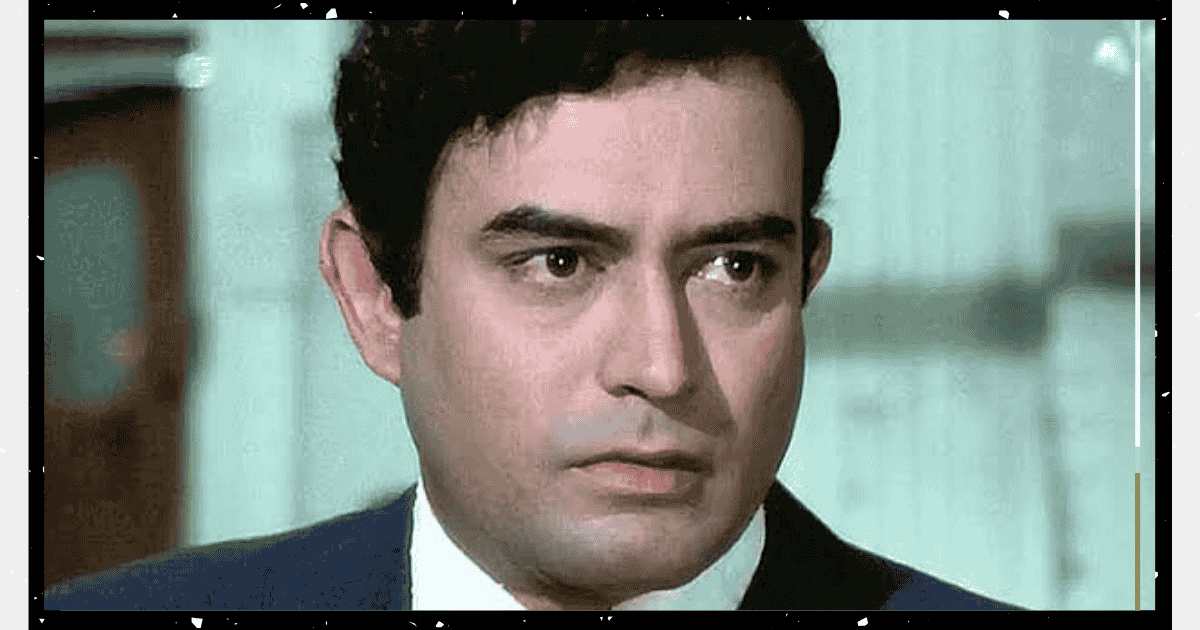On July 9, 2025, Bollywood paused to celebrate what would have been the 87th birth anniversary of Sanjeev Kumar, one of Indian cinema’s most revered actors. Born Harihar Jethalal Jariwala in 1938, Sanjeev Kumar left an indelible mark on Hindi cinema with his unparalleled versatility, emotional depth, and ability to embody characters across genres and generations. From the rugged intensity of Sholay to the comedic brilliance of Angoor, his performances remain a benchmark for actors today. As fans and filmmakers honor his legacy on social media platforms like X, Sanjeev Kumar’s enduring appeal lies in his ability to transcend time, captivating audiences with roles that feel as fresh in 2025 as they did in the 1970s. What makes this Bollywood legend’s work resonate so deeply, and why does his genius continue to inspire?
The Rise of a Reluctant Star
Sanjeev Kumar’s journey to stardom was anything but conventional. Born in Surat, Gujarat, and raised in Mumbai, he began his career in theatre, honing his craft with the Indian People’s Theatre Association (IPTA). His early roles in films like Nishaan (1965) were modest, but his breakout came with Khilona (1970), where he played a mentally unstable man with heartbreaking authenticity. At a time when Bollywood was dominated by romantic heroes like Rajesh Khanna and action stars like Dharmendra, Sanjeev Kumar carved a niche as an actor who could portray complex, flawed characters with effortless ease.
His collaboration with director Gulzar became a cornerstone of his career. Films like Koshish (1972), where he played a deaf-mute man, and Aandhi (1975), as a conflicted politician, showcased his ability to convey profound emotions without relying on dialogue. Unlike his contemporaries, Sanjeev Kumar shunned the star persona, often taking on unconventional roles—aging himself for Mausam (1975) or playing multiple characters in Angoor (1982). His willingness to experiment earned him the title of Bollywood’s “actor’s actor,” a reputation that resonates in 2025 as filmmakers like Anurag Kashyap cite him as an inspiration on X.
A Master of Versatility
Sanjeev Kumar’s filmography, spanning over 100 films, is a testament to his range. In Sholay (1975), he embodied Thakur Baldev Singh, a vengeful ex-cop, with a quiet intensity that stole scenes from co-stars like Amitabh Bachchan and Dharmendra. His portrayal of a man stripped of his arms—and pride—remains one of Bollywood’s most iconic performances. Yet, in Angoor, a comedy inspired by Shakespeare’s The Comedy of Errors, he played twin brothers with such distinct quirks that audiences forgot they were watching the same actor. His ability to shift from tragedy to farce, often within the same year, set him apart in an industry that often typecast its stars.
In Pati Patni Aur Woh (1978), he brought humor and pathos to the role of a philandering husband, while in Trishul (1978), his stoic businessman stood toe-to-toe with Bachchan’s fiery anti-hero. His performances in Parichay (1972) and Namkeen (1982) revealed a softer side, portraying men grappling with personal loss and societal expectations. Sanjeev Kumar’s chameleon-like ability to inhabit any role—be it a romantic lead, a grieving father, or a comic everyman—made him a favorite of directors like Hrishikesh Mukherjee and Yash Chopra. Fans on X often share clips of his scenes, with posts like “No one could do what Hari bhai did” reflecting his lasting impact.
The Emotional Core of His Craft
What set Sanjeev Kumar apart was his ability to convey raw, human emotion. His eyes, often described as his greatest asset, could express love, pain, or resignation without a word. In Koshish, his silent exchanges with co-star Jaya Bhaduri (now Bachchan) captured the struggles of a deaf couple with such authenticity that the film remains a touchstone for disability representation in Indian cinema. In Aandhi, his restrained portrayal of a politician torn between duty and love opposite Suchitra Sen added layers to a politically sensitive story, earning praise even amidst the film’s initial censorship.
Sanjeev Kumar’s dedication to his craft was legendary. He famously learned sign language for Koshish and spent hours studying real-life mannerisms to perfect his roles. His commitment extended to his physical transformations—aging decades for Mausam or adopting subtle tics for Angoor’s twins. Unlike the method acting trend of today, his approach was intuitive, rooted in observation and empathy. This authenticity resonates with modern audiences, who, in an era of OTT platforms, rediscover his films on services like Zee5 and Amazon Prime Video, where classics like Dastak (1970) and Seeta Aur Geeta (1972) continue to draw viewers.
A Legacy Cut Short
Tragically, Sanjeev Kumar’s career was cut short by his untimely death in 1985 at age 47, due to a congenital heart condition. His passing left a void in Bollywood, with unfinished projects like Professor Ki Padosan later completed with stand-ins. Despite his short career, his impact endures. He won two National Film Awards—for Dastak and Koshish—and multiple Filmfare Awards, but his true legacy lies in the emotional connection he forged with audiences. Posts on X from July 9, 2025, highlight this, with fans sharing tributes like “Sanjeev Kumar’s soulful acting will never fade” and clips from Sholay and Angoor trending alongside his name.
His influence extends to contemporary cinema. Actors like Nawazuddin Siddiqui and Pankaj Tripathi, known for their versatility, are often compared to Sanjeev Kumar, while directors like Sanjay Leela Bhansali have cited his performances as a blueprint for character-driven storytelling. The re-release of Sholay in 3D in 2024 and retrospectives at film festivals have introduced his work to younger audiences, who marvel at his ability to hold his own in ensemble casts with stars like Hema Malini and Rekha.
Challenges and Critiques
Sanjeev Kumar’s career wasn’t without challenges. His unconventional looks and refusal to play the traditional hero limited his roles in mainstream romances, often relegating him to character-driven or supporting parts. Some critics argued his intense roles overshadowed his comedic brilliance, with films like Angoor gaining cult status only after his death. His private life, marked by rumored relationships with co-stars like Hema Malini and a reluctance to marry due to his health, added a layer of mystique but also kept him out of the gossip-driven stardom of the era.
In 2025, debates on X highlight a divide: some fans lament that Sanjeev Kumar is underappreciated compared to contemporaries like Amitabh Bachchan, while others argue his selective filmography ensured quality over quantity. The lack of a centralized archive for his lesser-known films, like Manchali (1973), makes it harder for new fans to access his full range, a sentiment echoed in posts calling for a dedicated streaming collection.
Why Sanjeev Kumar Still Captivates
Sanjeev Kumar’s enduring appeal lies in his universality. His characters—whether a vengeful Thakur, a bumbling twin, or a mute father—resonate across generations because they reflect timeless human struggles. In an era of larger-than-life Bollywood spectacles, his understated performances feel refreshingly modern, aligning with the nuanced storytelling of today’s OTT platforms. His ability to portray vulnerability, a rarity among male leads of his time, challenges stereotypes and inspires actors to embrace emotional complexity.
The 87th anniversary celebrations underscore his relevance. Film institutes in Mumbai and Delhi hosted screenings of Koshish and Mausam on July 9, 2025, while fan-driven tributes on X included AI-generated montages of his iconic scenes. His influence extends beyond India—global cinephiles, introduced to Bollywood via streaming, cite him alongside legends like Dilip Kumar. As Bollywood evolves, Sanjeev Kumar’s legacy serves as a reminder that great acting transcends trends, rooted in authenticity and heart.
Final Thoughts
At 87, Sanjeev Kumar remains a towering figure in Bollywood, his versatile genius undimmed by time. From the raw intensity of Sholay to the comedic finesse of Angoor, his performances continue to captivate, offering lessons in craft and humanity. As fans and filmmakers honor his legacy in 2025, his work stands as a bridge between Bollywood’s golden age and its modern renaissance. Sanjeev Kumar didn’t just act—he breathed life into stories, leaving a cinematic imprint that will inspire generations to come.
Last Updated on Thursday, July 10, 2025 12:06 pm by Shashivardhan Reddy











